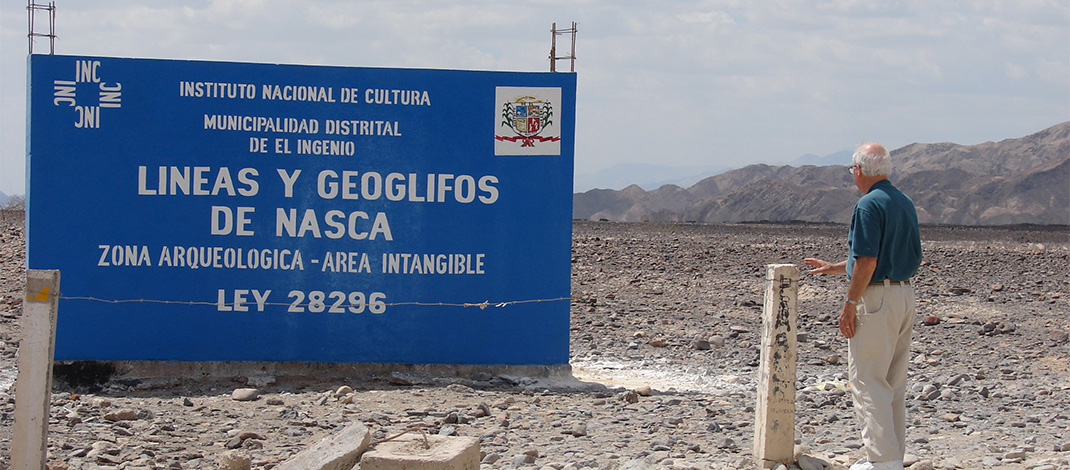A few hours from Lima, Peru’s capital, Nazca has been known for its gigantic lines, which were declared a UNESCO World Heritage Site in 1994

Nazca is five hours by bus south of Lima, the capital of Peru. Nazca is famed for the geoglyphs etched into the arid desert.
Thought to have been designed by the Nazca people between 500 B.C. and A.D. 500 they remain an enigma.
The reason for making such large drawings, which the designer would not be able to see, has given rise to the theory that aliens were somehow involved.
A Peruvian archaeologist was the first to study the lines but it wasn’t until a pilot flew over the area in the 1930s that the scope and scale of the designs were fully appreciated.
The lines are divided into two groups: ones that depict a variety of animals, birds and other living things; the other is comprised of lines that crisscross the desert and include some that form a design of geometric figures such as spirals, triangles and the like.

The geoglyphs were created by removing the dark sand and iron-oxide-coated gravel surface to reveal the pale ground underneath.
Today there are flight-seeing trips to view the lines and designs. There is also a viewing tower for those who choose not to fly. The Nazca lines were declared a UNESCO World Heritage Site in 1994.
The Nazca lines are the main draw to the area but there are several other interesting things to see and do.
The Cantalloc aqueducts are nearby and date back 1,500 years. They were built by a pre-Inca civilization. The aqueducts are a series of spiral steps that are lined with stone and join the underground tunnels. The system was capable of transporting water over long distance which was necessary for such an arid area.

To learn more about the Nazca culture visit the Museo Antonini. On display are more than 300 artifacts and art objects including instruments, textiles, tools and ceramics and explanations of how they were used. There is also a scale model of the Nazca lines and replicas of Nazca tombs. One gallery has human skulls that may have been part of a human sacrifice ceremony to appease Inti, the Nazca sun god. Behind Museo Antonini is another example of advanced Nazca engineering, the Bisambra aqueduct, an ancient hydraulic system that directed water from the Bisambra canal to nearby Nazca settlements.
Nazca is located in the Ica Valley one of Peru’s grape growing regions and is famed for producing pisco. There are nearly 85 wine producers in the area. Pisco is made from the Muscat varieties of grapes. The high–proof spirit is used to make pisco sours, the signature cocktail of Peru.
There are a several wineries offering a variety of experiences from dining to horseback riding. Some even have accommodations. The best tours not only show how wine is produced today but also the traditional way of making wine. Vineyards were introduced in Peru by the Spanish.

Not to miss is a thrilling dune buggy ride in the Cerro Blanco Sand Dune, one of the tallest sand dunes in the world. From the top at 3,860 feet it is possible to see the entire Nazca Valley. Many locals hold to the belief that it was the source of water and occasionally leave offerings on top of the dune. The more adventurous might want to try sandboarding.
It is best to visit Nazca as an add-on when in Lima. A valid passport is all that is necessary when visiting Peru. Credit cards are widely accepted in tourist areas. English is widely spoken in some areas, but a translation app is helpful.


